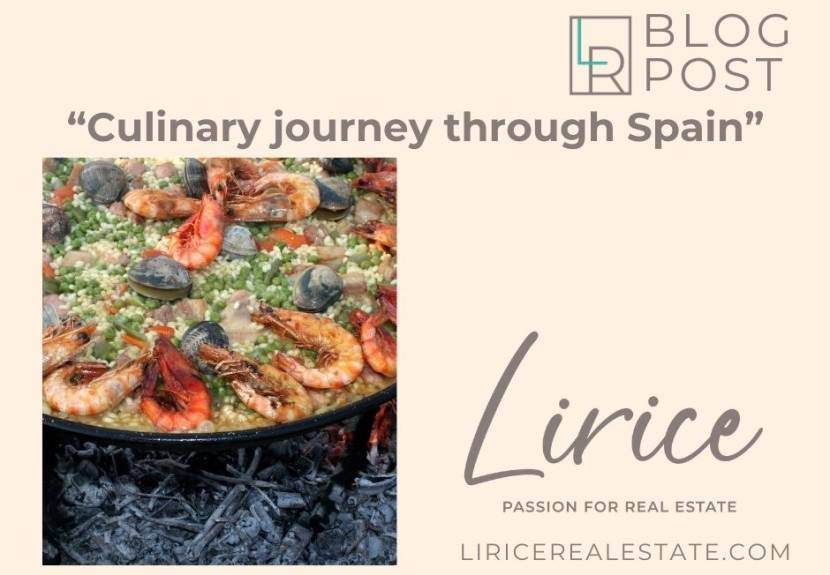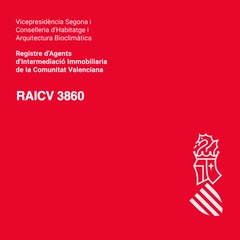
Spanish Cuisine: A Culinary Journey Through Spain
Spanish Cuisine: A Flavorful Journey
Spanish cuisine is a rich and diverse culinary tradition deeply rooted in the country's history and culture. Each region of Spain has its own unique dishes and flavors, together creating a mosaic of culinary refinement and simplicity. In this blog, we take you on a delicious journey through the various culinary treasures Spain has to offer.
Tapas: Small Dishes, Big Flavors
No discussion of Spanish cuisine is complete without mentioning tapas. Tapas are small snacks originally served with a glass of wine or beer. They range from simple olives and nuts to more complex dishes like gambas al ajillo (garlic shrimp) and patatas bravas (spicy potatoes). Tapas are a social dining experience where friends and family gather to share different dishes. In cities like Seville and Madrid, you can follow tapas routes, hopping from bar to bar to enjoy the various specialties each place offers.
Paella: Valencia’s Pride
Paella is perhaps the most famous dish outside Spain and originates from the Valencia region. Traditionally made with rice, saffron, chicken, rabbit, and sometimes seafood, the dish is often cooked in a large, flat pan, creating the characteristic crispy bottom layer known as 'socarrat'. Modern variations may include ingredients like chorizo, vegetables, and different types of fish. The secret to perfect paella lies in the quality of the ingredients and the art of cooking over an open flame, imparting a subtle smoky flavor to the dish.
Gazpacho and Salmorejo: Refreshing Soups
In the warm summer months, there’s nothing more refreshing than a bowl of gazpacho. This cold soup, made from tomatoes, peppers, cucumbers, onions, garlic, and olive oil, is a classic from Andalusia. Gazpacho is not only refreshing but also nutritious and healthy. A thicker variant, salmorejo, includes bread and is often garnished with hard-boiled eggs and Serrano ham. Both soups are perfect for enjoying the rich flavors of fresh summer vegetables.
Jamón Ibérico: The King of Spanish Ham
Jamón Ibérico is a delicacy often considered the highlight of Spanish charcuterie. This ham is made from Iberian pigs that feed on acorns, giving the ham a unique, nutty flavor. The drying and aging process can take years, adding complexity and depth to the taste. Thin slices of jamón are often served as part of a tapa or as an accompaniment to a plate of cheese and olives. A similar but less exclusive variant is jamón serrano, which also holds a significant place in Spanish cuisine.
Tortilla Española: Simplicity and Flavor
Tortilla Española, or Spanish omelet, is a simple yet delicious dish primarily made of eggs, potatoes, and onions. It is slowly cooked until the outside is golden brown and crispy while the inside remains soft and creamy. This tortilla can be enjoyed warm or cold and is a popular dish for both breakfast and tapas. It is a staple that is often customized with additional ingredients like chorizo, peppers, or spinach, depending on the region and the cook’s preference.
Churros con Chocolate: A Sweet Treat
No meal is complete without a touch of sweetness, and churros con chocolate is a favorite among Spanish desserts. Churros are fried dough sticks sprinkled with sugar and dipped in a rich, thick chocolate sauce. This dish is often eaten for breakfast or as a late-night snack, especially during holidays and festivals. In cities like Madrid, churrerías where you can taste the best churros are often open early in the morning and remain busy late into the night.
Regional Diversity
Each region in Spain has its own specialties that highlight the country’s culinary diversity. In the Basque Country, you’ll find pintxos, small bites often served on skewers. Pintxos are an art form, with carefully crafted combinations of flavors and textures. In Galicia, seafood takes center stage, with dishes like pulpo a la gallega (Galician octopus). This region is famous for its fresh fish and shellfish, often simply prepared to highlight natural flavors. Catalonia offers rich, flavorful dishes like escalivada (roasted vegetables) and crema catalana (a variant of crème brûlée). In Andalusia, you can enjoy dishes with Moorish influences, such as rabo de toro (oxtail stew) and the previously mentioned gazpacho.
The Influence of History on Spanish Cuisine
Spanish cuisine is strongly influenced by the various cultures that have been present in Spain over the centuries. The Romans introduced olive oil and wine, which still play a fundamental role in Spanish gastronomy. The Moors brought rice, spices like saffron, and almonds, which are now essential in many Spanish dishes. During the exploration of the New World, products like tomatoes, peppers, potatoes, and cacao were brought to Europe, now indispensable in Spanish cuisine. These historical influences have led to a culinary richness that is unique in the world.
Spanish Wines: A Perfect Complement
A discussion of Spanish cuisine would not be complete without mentioning Spanish wines. Spain is one of the largest wine producers in the world, with a wide range of high-quality wines. Rioja and Ribera del Duero are known for their robust red wines, while Rías Baixas is famous for its fresh, white Albariño wines. Cava, a sparkling wine from Catalonia, is a popular alternative to champagne. These wines perfectly complement the rich flavors of Spanish cuisine and enhance the dining experience.
The Modern Spanish Cuisine
Modern Spanish cuisine has undergone an exciting evolution, thanks in part to pioneering chefs like Ferran Adrià and the Roca brothers. These chefs have reinvented traditional Spanish dishes by applying innovative techniques and presentations. Molecular gastronomy, which uses scientific principles to create new textures and flavors, has found its way into Spain’s top kitchens. Restaurants like El Bulli and El Celler de Can Roca have gained global recognition, putting Spain on the map as a destination for avant-garde gastronomy.
Preparing Spanish Dishes at Home
One of the best ways to appreciate Spanish cuisine is to prepare some dishes at home. Luckily, many Spanish recipes are simple and require just a few basic ingredients. Here are some tips to get started:
Making Paella at Home
For an authentic paella, you need a few crucial ingredients: paella rice (such as Bomba or Calasparra), saffron, good broth, and a large, flat paella pan. Start by sautéing chicken and rabbit in olive oil, then add finely chopped tomatoes and peppers. Add the rice and saffron and mix well, pour in the broth, and let simmer without stirring until the rice is cooked and a crispy socarrat forms on the bottom.
Making Gazpacho Yourself
Gazpacho is easy to make and perfect for warm days. Blend ripe tomatoes, red peppers, cucumber, onion, garlic, olive oil, and a bit of vinegar into a smooth soup. Season with salt and pepper, and let it chill in the refrigerator for a few hours. Serve cold, optionally garnished with chopped vegetables or croutons.
Tortilla Española
For a delicious tortilla Española, peel and slice potatoes thinly, and cook them slowly in olive oil until tender. Add sliced onions and cook until golden brown. Beat eggs and mix with the potatoes and onions, pour the mixture into a frying pan and cook until the tortilla is set but still soft in the middle. Flip the tortilla and cook the other side until golden brown.
Culinary Festivals in Spain
Another way to explore Spanish cuisine is by visiting one of the many culinary festivals held throughout the country. Each festival offers a unique chance to taste local specialties and learn more about the culinary traditions of the region.
La Tomatina
One of the most famous festivals is La Tomatina, which takes place annually in the town of Buñol in the Valencia region. During this festival, participants throw thousands of tomatoes at each other in a huge, joyful battle. While it may be more of a spectacle than a culinary experience, it provides a chance to experience local culture and enjoy the tomatoes that play a central role in Spanish cuisine.
Feria de Abril
In Seville, the Feria de Abril is held annually, one of Spain’s largest and most vibrant festivals. During this week-long celebration, people come together to dance, make music, and enjoy an abundance of food and drink. Tapas, sherry, and traditional Andalusian dishes are available everywhere, and the atmosphere is festive and welcoming.
San Sebastián Gastronomika
For serious foodies, the San Sebastián Gastronomika festival is a must-visit. This event brings together some of the best chefs in the world for demonstrations, tastings, and discussions about the latest trends in the culinary world. San Sebastián, located in the Basque Country, is known for its pintxos and is a paradise for food enthusiasts.
Conclusion
Spanish cuisine is a feast for the senses, full of vibrant colors, intense flavors, and rich aromas. Whether you’re enjoying a simple tapa, a hearty paella, or a refreshing gazpacho, each bite tells a story of tradition, culture, and passion. So, the next time you sit down to eat, why not bring a bit of Spain into your kitchen? Cheers and buen provecho!
















